The situation on the Polish-German border poses a threat of an uncontrolled outage of the grid in the EU, in a scale comparable to the infamous collapse of the western European power system in November 2006, Polish power grid operator warns in a report. The Polish government is asking the EU energy commissioner for help.
By the end of 2015, ENTSO-E, an organization of EU’s grid operators, published a report on the grid condition and on energy system security. ENTSO-E publishes such documents twice a year.
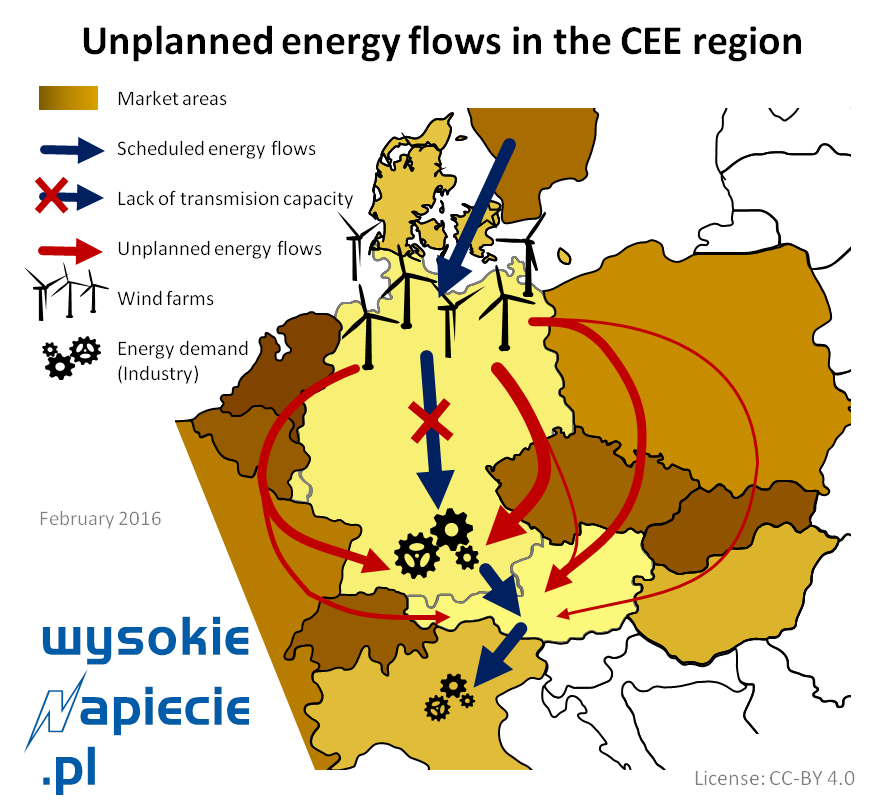 The December report contained the information about the critical August 10, 2015. On this day, Poland was forced to curb power supplies through the introduction of the so-called 20th supply degree for the first time since the 80s. Several thousand enterprises had their electricity consumption limited. Representatives of the then-government explained the difficulties with an exceptional situation: an extended heat wave had reduced water level in rivers to record-lows which, in turn, disabled cooling at several systemic coal-fuelled power plants and forced them to cut their output. On top of that, Poland had to cope with an outage of an 858 MW block at Bełchatów plant and simultaneous maintenance of several other blocks. The outcome: millions in losses to enterprises and the whole economy.
The December report contained the information about the critical August 10, 2015. On this day, Poland was forced to curb power supplies through the introduction of the so-called 20th supply degree for the first time since the 80s. Several thousand enterprises had their electricity consumption limited. Representatives of the then-government explained the difficulties with an exceptional situation: an extended heat wave had reduced water level in rivers to record-lows which, in turn, disabled cooling at several systemic coal-fuelled power plants and forced them to cut their output. On top of that, Poland had to cope with an outage of an 858 MW block at Bełchatów plant and simultaneous maintenance of several other blocks. The outcome: millions in losses to enterprises and the whole economy.
Polish power grid operator Polskie Sieci Elektroenergetyczne (PSE) submitted a report on these events to the energy watchdog Urząd Regulacji Energetyki (URE) in November 2015, as required by the law. But the report was confidential as it contained confidential business information.
Over nearly three months, none of the institutions involved managed to draft an extensive summary of the report which would contain no sensitive data in order to inform Poles about the causes and consequences of these events or the preventative measures taken. According to information we obtained unofficially, the work on such document is underway, but it remains unclear when it will be ready.
But PSE submitted extensive information to ENTSO-E which constitutes part of the latter’s report. What does it show?
In the opinion of the Polish operator, a significant part of the blame for the August capacities shortage should be attributed to the “well known issue of loop flows between Germany and Poland”.
For those of our readers who do not follow on a daily basis the subjects which get energy sector insiders worked up: at issue are the unplanned energy flows from Germany to Austria. The two countries are regarded as a single power market. But the state of the grid in the south of Germany does not allow to transmit all energy through the connections at the German-Austrian border and another way has to be found. This other way goes via Poland, Czech Republic, Slovakia and Hungary. The situation is made even worse by the fact that power from the east of Germany stems mostly from renewable sources – wind and sun. Hence, the production cannot be planned.
According to PSE explanation, in order to prevent system de-stabilization, one should launch all domestic power plants, especially those close to Poland’s western border. To put it in simple terms, it is about “pushing away” the unwanted German electricity. When the grid operating conditions in the region allow, such energy flows through Germany, Denmark and Sweden, and returns to Poland via a submarine cable. The other, more costly option is to reduce electricity output in Germany and increase generation in Poland – in that case, electricity does not return to Poland. Under these mechanisms, PSE bought from domestic plants and sent to Germany 1.5 TWh last year – nearly 1% of domestic output.
But this solution is becoming increasingly difficult due to the lack of available domestic capacities and to the growing amount of power from Germany. In June-September 2015, the amount of energy needed to reduce loop flows was 7x higher than in the same period of 2014 and as much as 78x above the amount needed in summer 2013.
The most expensive solution of last resort is cutting energy production in eastern Germany and increasing it in other regions – usually in Austria, Switzerland and south-western Germany.
Sometimes, however, even this is not enough. After August, more critical days came, when the system was on the verge of a collapse: on September 1 and 15. On both of these days, the Polish grid did not fulfill the so-called N-1 criterion. This means it failed to meet the basic security rule for power grid operations stating that the system always has to operate in a manner ensuring that a failure of any single element (e.g. a section of the grid, a large transformer station or any power block in a power plant) will not result in a breakdown of the entire system.
In August and September, Poland was facing a situation where a single failure could result in a blackout in many European countries. On September 1, Poland had to launch emergency imports from Ukraine and reduce the demand at companies with which it has signed demand response contracts.
But it was September 15 that was the worst: Poland had to launch re-dispatching of record capacities of 6,237 MW. On that day, PSE was facing a situation of barely sufficient system reserves “and the operator could not cope with unpredictable occurrences such as the loss of 2.2 GW capacity which took place on August 9 and 10,” the ENTSO-E document shows.
The system was not meeting the N-1 criterion for a total of 5 hours – between 8:50 and 9:07 and then between 10:47 and 15:10 as well as between 16:30 and 17:10. Fortunately, no more unplanned occurrences happened on that day.
PSE warns: “at that time, the security of all connections on the continents was threatened (the risk of cascade failures leading to a collapse of the system as was the case on November 4, 2006, with consequences difficult to assess”). As a result of such a failure back in 2006, 15 mln Europeans suffered power outages in north-western Germany, Belgium and Holland.
Can the situation witnessed in August occur again? PSE warns that it is possible, should conditions in winter be difficult, i.e. should extended periods of very low below-zero temperature occur simultaneously with uncontrolled inflows of electricity from Germany. The periods burdened with the biggest risk of capacity shortages in the system are the 12th and 14th weeks of the year, i.e. the time around mid-March, PSE’s forecast shows.
Also holiday periods are difficult due to the accompanying drop in demand and a decline in the production of Polish power plants which causes bigger loop flows. “PSE confirms that during the difficult days of the year (especially Christmas, Easter and the long weekend in May [i.e. the time when many Poles decide to take days off around two public holidays on May 1 and 3]), when the low demand accompanied by strong winds [which power German wind farms] may cause problems to the balancing of the Polish power system.”
Unfortunately, the Polish grid operator did not disclose in the ENTSO-E report the costs sustained by Poles as recipients in payments to the neighboring states’ operators for re-dispatching. Reportedly, the re-dispatching reached “an extreme level,” hence several dozen million euro seems a likely amount.
PSE writes bitterly: “in connection with the balancing problems of this summer, PSE was asked by market participants why the Polish system with a peak summer demand of some 20 GW, operating on an area where 400 GW is synchronously connected, was not able to ensure imports of 1 GW, even in an emergency situation. An important question needs to be asked: how does that go along with the European concept of regional balancing? One could also ask about the advantages achieved by customers outside Poland from transactions made outside Poland [i.e. between Germany and Austria] as compared to costs incurred by Poland in order to reduce their negative impact on the Polish power system as well as the entire CE system. Polish consumers are cut off from the European market because most of the capacities available for imports is taken up by unplanned flows.”
What is Germany’s stance on the issue? The German part of the ENTSO-E report is very succinct. While Germany admits that unplanned flows are causing problems, it rather disagrees with the scale of them as presented by PSE.
“Due to the tight capacities balance in Poland, caused by the drought, bilateral re-dispatching limiting uncontrolled flows could be conducted in a smaller scale. This led to a bigger scale of multilateral re-dispatching in order to maintain the N-1 level between Poland and Germany.”
Loop flows were one of the key topics discussed by the top officials of the Polish Energy Ministry with the EU Energy Commissioner Miguel Arias Canete. Poland would like the European Commission to help implement the opinion of ACER – an organization of the EU energy market regulators. Upon the motion of Poland’s power market watchdog URE, ACER decided that the Austrian and German market should be split so as to take into consideration the actual transmission capacities between these countries. According to our sources in the Polish government, Canete promised to support the implementation of ACER’s recommendation into the grid codes that ENTSO-E is working on. When could this happen? Canete has not said, the source reported.
The situation will not improve until the first phase-shifting transformers begin operating on the Polish-German border. They allow for a more effective management of energy imports and exports. The transformers installed by PSE at the southern connection with Germany in the vicinity of Zgorzelec will start operating already this year. The supply of the rest of transformers – for the northern link with Germany, for the purchase of which Germany is responsible – has been delayed.
But already with the first phase-shifting transformers in the south, PSE wants to begin testing the potential for managing power flows between Poland and Germany in a way that assumes switching off the northern connection, while the operations of the southern connection would be managed. However, it may turn out that blocking flows through Poland, especially if the Czech Republic (which already has phase-shifting transformers installed) joined the blockade, would create the risk of German grid overload and mass power failures beyond the western border, another scenario that PSE wants to avoid.
While the cooperation between Poland and Germany is not going badly, in spite of all the issues, Austria is acting rather egoistically. The Austrian operator E-Control referred ACER’s opinion to the European Court of Justice. The connections between Austria and Germany are not jammed, Vienna claims, while ACER is imposing the most radical solution too rashly – suggesting splitting the market, without considering other options.
According to Austrian power concern Verbund, which joined E-Control’s complaint, splitting the markets would result in a 15% surge in prices in Austria. This would likely hit the biggest energy importers in this region of Europe – Italy, which is now benefitting from low prices thanks to solar and wind energy in Germany and hydropower in Austria.
A prompt intervention of Brussels concerning this issue seems much needed.


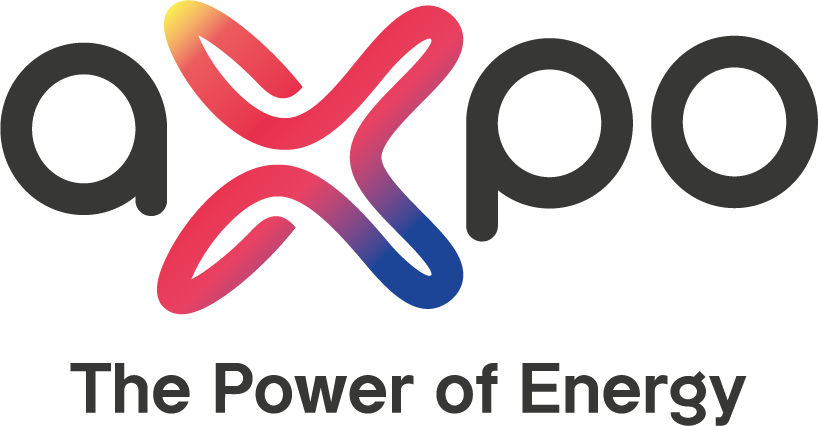




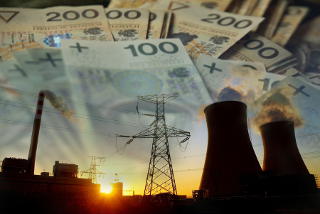 Poland's biggest power concern, state-run Polska Grupa Energetyczna (PGE) has recently written off some PLN 9 bln (EUR 2.1 bln) in a revaluation of its key power plants and plans to revise its business strategy. The group will scale down investments, attempt to cut costs and place more focus on the diversification of the fuel mix.
Poland's biggest power concern, state-run Polska Grupa Energetyczna (PGE) has recently written off some PLN 9 bln (EUR 2.1 bln) in a revaluation of its key power plants and plans to revise its business strategy. The group will scale down investments, attempt to cut costs and place more focus on the diversification of the fuel mix. 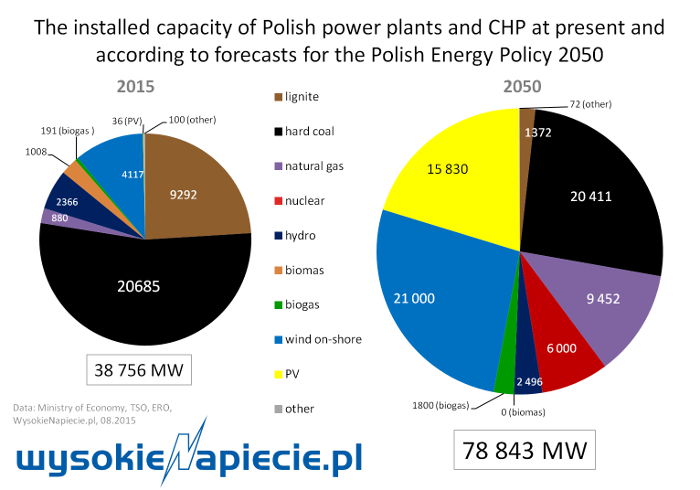 Despite the provisions on the key share of lignite and hard coal in the energy mix, Poland will continue to increase the share of renewables also after 2020. To what extent – that is yet to be determined as haggling over the exact target share of renewables is still underway. Below, we present concepts that have been discussed by the governmental teams as well as the forecasts commissioned by the Economy Ministry.
Despite the provisions on the key share of lignite and hard coal in the energy mix, Poland will continue to increase the share of renewables also after 2020. To what extent – that is yet to be determined as haggling over the exact target share of renewables is still underway. Below, we present concepts that have been discussed by the governmental teams as well as the forecasts commissioned by the Economy Ministry.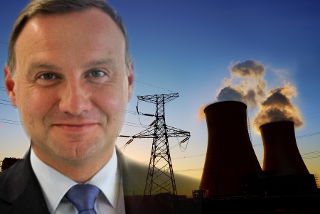 Opposing climate policy, defending coal industry employees and diversifying natural gas supplies – these are political declarations of Poland's president-elect. Then there are also the declarations of Duda’a party PiS to consider: tilting at windmills, poor support for Poland’s nuclear power plant and for prosumer energy sector. The new president stands for the continuation along the lines of energy policy of PO-PSL government.
Opposing climate policy, defending coal industry employees and diversifying natural gas supplies – these are political declarations of Poland's president-elect. Then there are also the declarations of Duda’a party PiS to consider: tilting at windmills, poor support for Poland’s nuclear power plant and for prosumer energy sector. The new president stands for the continuation along the lines of energy policy of PO-PSL government.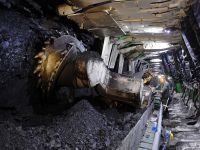 I know that changes in Poland will be painful in the short term, but it’s better to prepare the ground for them already. It’s important to learn from other countries’ experiences - says Philip Garner, Director General of Coal Pro, the confederation of UK coal producers in an interview on what went wrong in the UK's coal mining sector and what can happen in Poland.
I know that changes in Poland will be painful in the short term, but it’s better to prepare the ground for them already. It’s important to learn from other countries’ experiences - says Philip Garner, Director General of Coal Pro, the confederation of UK coal producers in an interview on what went wrong in the UK's coal mining sector and what can happen in Poland.